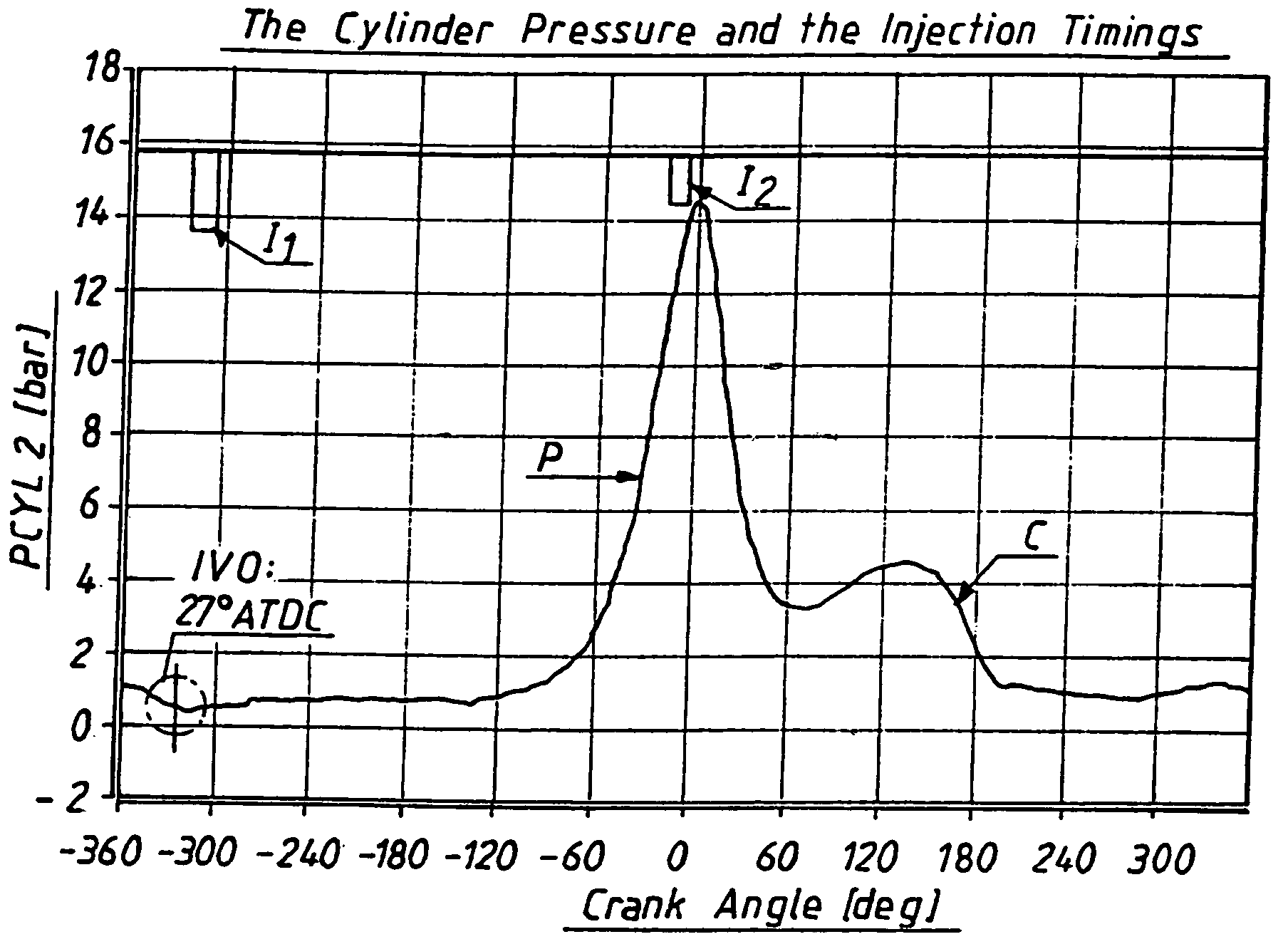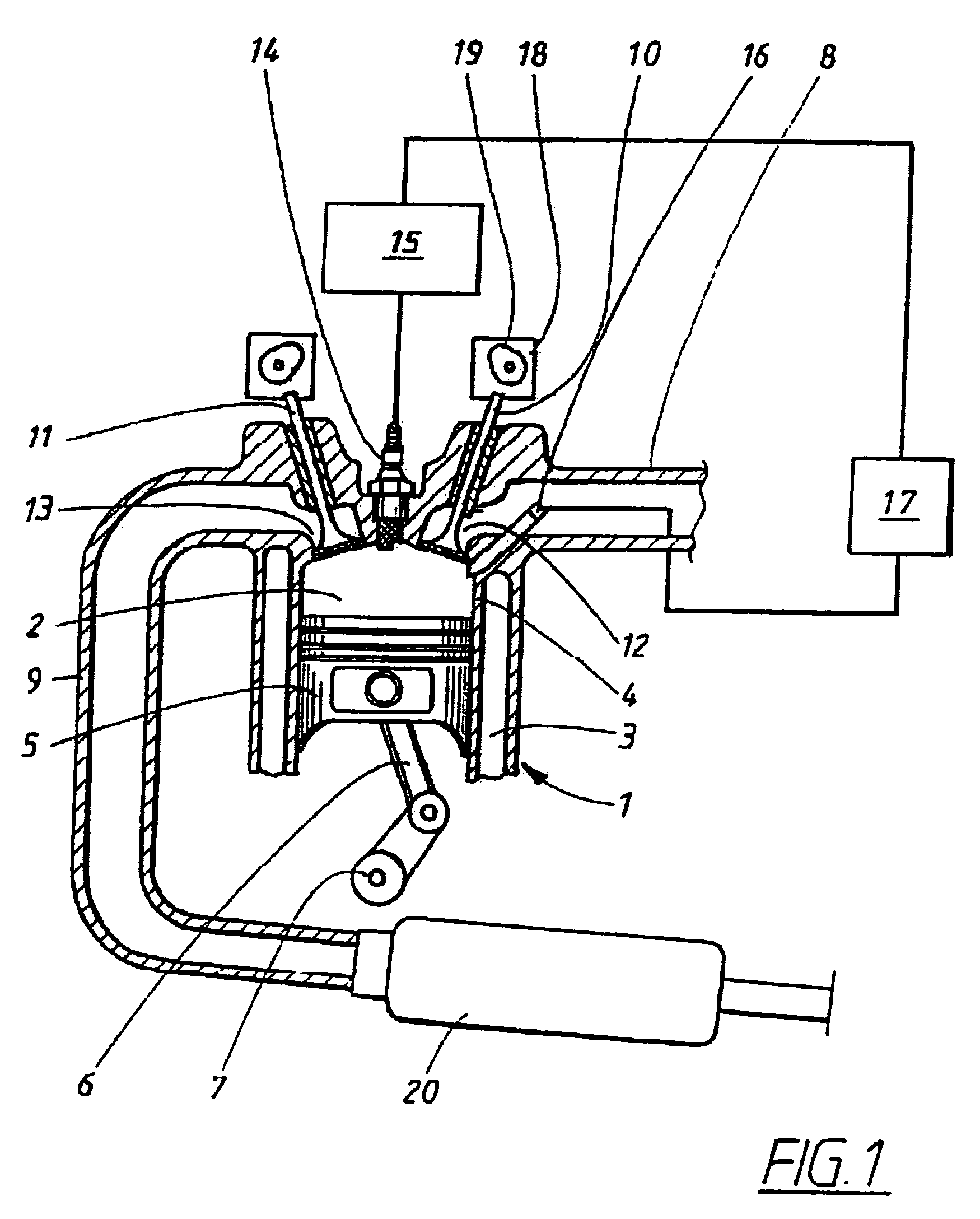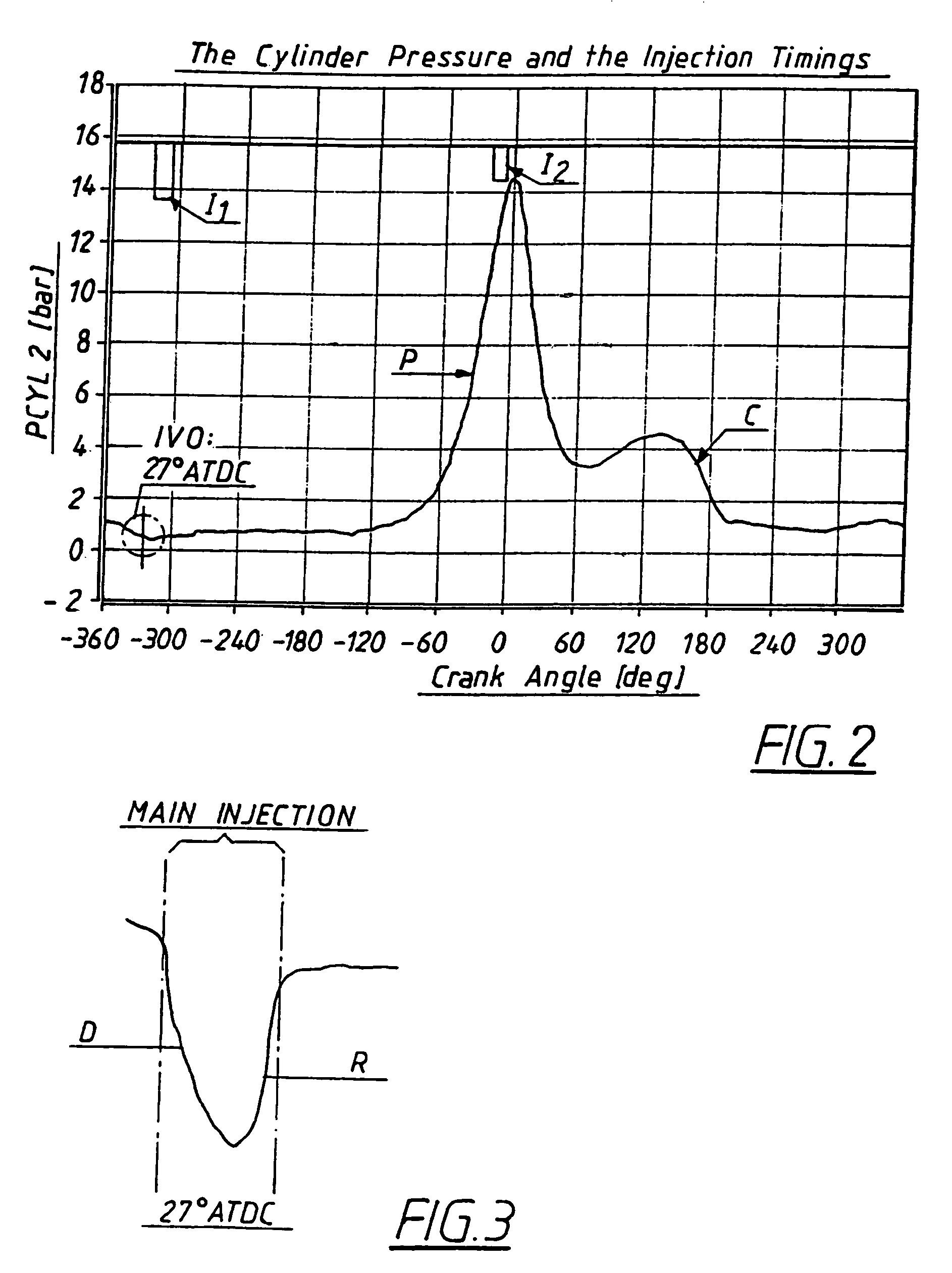Method of reducing exhaust gas emissions during cold start conditions and an internal combustion engine in which the method is used
a technology of exhaust gas emissions and internal combustion engine, which is applied in the direction of machines/engines, electrical control, mechanical equipment, etc., can solve the problems of catalyst reaching the light off temperature more quickly, increasing the pressure difference between the in-cylinder pressure and the pressure inside the injector, and reducing the efficiency of the catalyst. , to achieve the effect of reducing the pressure difference, reducing the risk of catalyst oxidation, and improving the mixing of fuel
- Summary
- Abstract
- Description
- Claims
- Application Information
AI Technical Summary
Benefits of technology
Problems solved by technology
Method used
Image
Examples
Embodiment Construction
[0014]FIG. 1 show a spark ignition internal combustion engine. Engine 1 includes a set of combustion chambers 2, one of which is shown in the figure, formed in a cylinder block 3. The combustion chamber 2 is formed by a cylinder bore 4 in which a piston 5 is mounted. A connecting rod 6 transfers a reciprocating movement of the piston 5 into a rotational movement of a crank shaft 7.
[0015]The engine is further equipped with an intake conduit 8 and an exhaust conduit 9. The gas flow through the combustion chamber 2 is controlled by at least one intake valve 10 and at least one exhaust valve 11 arranged at an intake port 12 and exhaust port 13 providing a connection between the intake conduit 8 and the combustion chamber 2 respective between the combustion chamber 2 and the exhaust conduit.
[0016]Furthermore, the combustion chamber 2 is provided with ignition means 14 in the form of a spark plug which timing is controlled by an ignition system 15.
[0017]Fuel is injected by a fuel injector...
PUM
 Login to View More
Login to View More Abstract
Description
Claims
Application Information
 Login to View More
Login to View More - R&D
- Intellectual Property
- Life Sciences
- Materials
- Tech Scout
- Unparalleled Data Quality
- Higher Quality Content
- 60% Fewer Hallucinations
Browse by: Latest US Patents, China's latest patents, Technical Efficacy Thesaurus, Application Domain, Technology Topic, Popular Technical Reports.
© 2025 PatSnap. All rights reserved.Legal|Privacy policy|Modern Slavery Act Transparency Statement|Sitemap|About US| Contact US: help@patsnap.com



